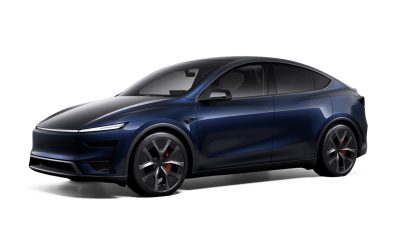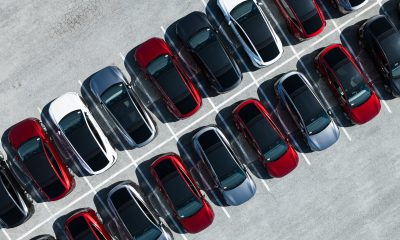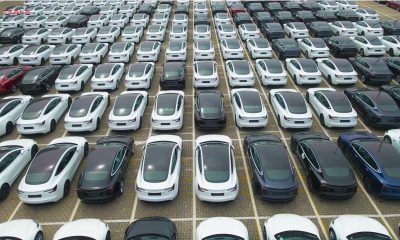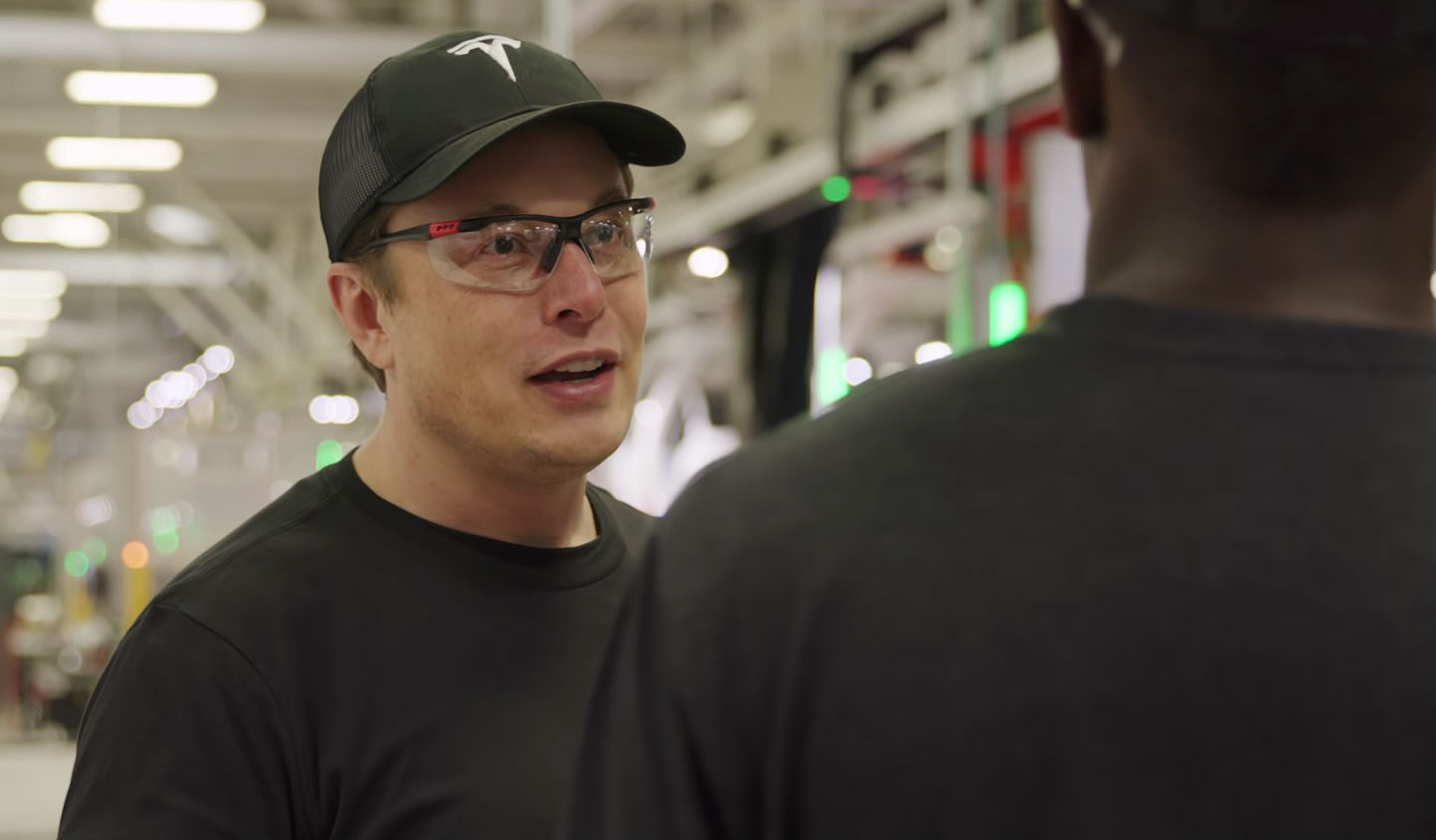
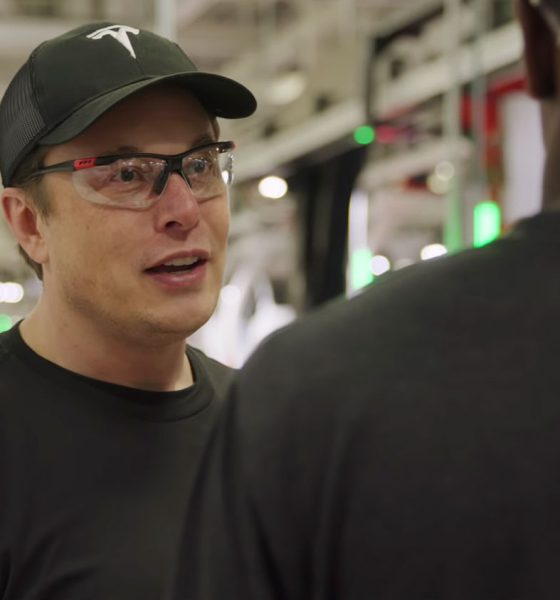
News
Elon Musk candidly shows how Tesla’s factory is balancing robots and human work
Back in 2016, Elon Musk described that Tesla’s factory would be “the machine that builds the machine.” Speaking to investors then, Musk noted that the codename for the project was the “Alien Dreadnought,” a machine similar to the massive extraterrestrial crafts depicted in iconic sci-fi films. Musk noted then that the Alien Dreadnought would likely be operational in 2018, with the factory churning out the Model 3 en masse.
As the Model 3 production ramp has shown, getting the Alien Dreadnought up to speed with the company’s manufacturing process turned out to be a much more challenging task than Musk had expected. Amidst delays in the Model 3 production ramp, Elon Musk noted in an interview with CBS earlier this year that humans are “underrated.” Musk also mentioned this in the company’s Q1 2018 earnings call, when he described how Tesla learned that some aspects of the manufacturing process are best done by human hands.
A look into Tesla’s electric car production process at the Fremont factory was recently uploaded on YouTube by noted tech reviewer Marques Brownlee, better known as MKBHD. After his interview with Elon Musk himself, the YouTube host was given a tour of the Tesla factory, particularly the Model S and Model X line. Musk candidly discussed several aspects of the factory, including how Tesla’s robots are programmed and how their operations are integrated with human work. Musk also lightly discussed how he is fond of the Fremont factory’s “dumb robots,” which are easier to program and perform nearly without fault.
Brownlee’s Tesla factory tour with Elon Musk was brief, (MKBHD notes that Musk was eventually pulled into a meeting), but it showed something that has been hidden for quite a while now — it showed an Elon Musk that was funny, optimistic, and seemingly still full of wonder at how the factory is operating. Musk was cracking jokes in the interview, and his inner nerd was in full force as he described to the YouTube host how some of the facility’s robots are named after characters in Marvel’s X-Men series.
In a way, the Elon Musk who went on an interview and toured the Fremont factory with The YouTube host looked like a CEO who was tired and exhausted, but one who is still passionate at what he is doing. Elon Musk’s emotional and psychological state has been a particular focus in the media lately, particularly following an honest interview with the New York Times. Musk showed a notable degree of vulnerability in the Times interview, even admitting that the past 12 months have been the most difficult and painful year of his career.
Tesla’s critics were quick to pounce on Musk’s exhaustion and the vulnerability he exhibited during the interview. And in a way, they are right — Elon Musk is underslept, overworked, and deathly tired. But behind all this is a man who is still pushing hard to get his targets done. Elon Musk in the factory tour with Brownlee was evidently exhausted and overworked, but despite this, he still retains that wit, optimism, and sense of wonder that made him a household name over the years.
Watch MKBHD’s tour of Tesla’s Fremont factory with Elon Musk in the video below.
News
Tesla launches new color from Gigafactory Berlin
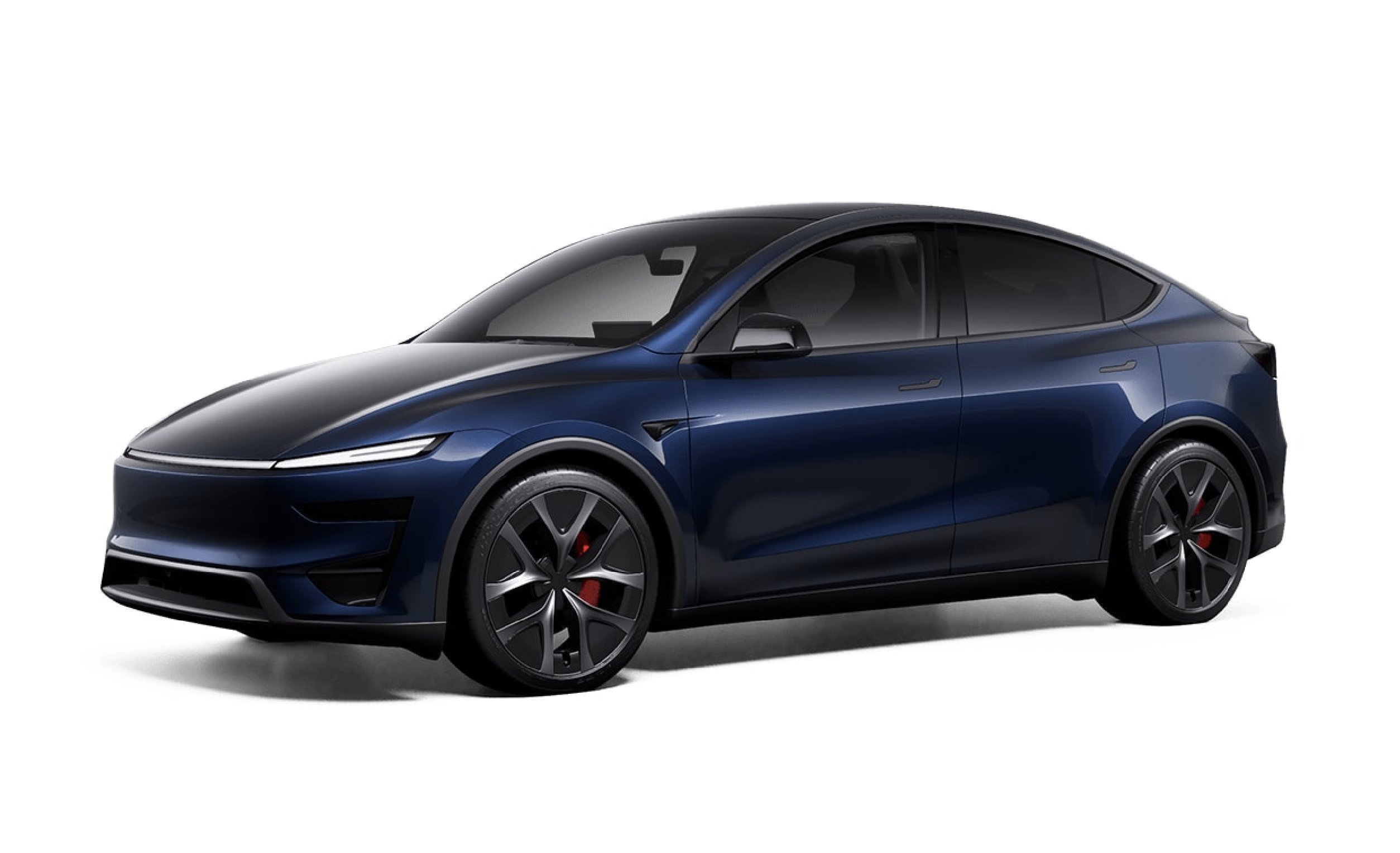
Tesla has launched a new color at Gigafactory Berlin in Germany, home of the company’s “world-class paint shop,” as Elon Musk once called it.
Bringing a new color to Tesla’s Model Y, there are now five available colors for those who will receive a vehicle from Gigafactory Berlin, with four of them being colors offered in other markets.
However, there is now one distinct color that is only available in Germany: Marine Blue.
🚨 Tesla has launched “Marine Blue” in select European countries
It is the third shade of blue Giga Berlin produces. It costs $1,500 pic.twitter.com/pVDWdNeBSJ
— TESLARATI (@Teslarati) October 10, 2025
Priced at €1,300, Marine Blue will cost the same as both Diamond Black and Stealth Grey, while Quicksilver and Ultra Red are available for double the price.
It is the third shade of blue Tesla offers across its lineup, as Deep Metallic Blue and Glacier Blue are also offered, but in other markets.
Tesla has routinely flexed Giga Berlin for having the most advanced paint shop throughout its factories, and it has produced some interesting colors over the past few years, some of which were truly awesome.
Tesla Giga Berlin is getting a world-class paint shop, new color ‘layers’ to come
In 2020, Musk said, “Giga Berlin will have the world’s most advanced paint shop, with more layers of stunning colors that subtly change with curvature.”
He also detailed the company’s plans to upgrade the Fremont and Shanghai paint shops. Gigafactory Texas was not yet unveiled. Tesla has worked to improve those facilities, especially in Fremont.
It was able to roll out the new Diamond Black color earlier this year.
However, Giga Berlin seems to remain the standard in terms of paint for Tesla. It routinely offers new colors.
For example, back in 2022, Tesla rolled out its familiar Quicksilver color for the Model Y, while also introducing Midnight Cherry Red, a color close to burgundy. However, the company chose to discontinue the color after determining internally that customers no longer wanted to buy it.
Midnight Cherry Red was removed as an option earlier this year, likely to make way for the development of the new Marine Blue.
News
Tesla Autopilot visualization gets big upgrade with tons of new additions
The AP visualization shows up on the center touchscreen and illustrates the surroundings of the cars. It has gotten better in recent years, as it is able to outline types of vehicles, pedestrians, animals, and more.

Tesla’s Autopilot visualization just got a big upgrade as the company added tons of new additions to what it will be able to render in terms of a vehicle’s surroundings.
The AP visualization shows up on the center touchscreen and illustrates the surroundings of the cars. It has gotten better in recent years, as it is able to outline types of vehicles, pedestrians, animals, and more.
Tesla just fixed a four-year-old bug with Full Self-Driving visualization
However, it still does not have every single application, and acquiring them will take some time. If an object or vehicle is visible to the vehicle but an accurate render is not available, the car will instead pick whatever is closest.
For example, I passed an Amish family yesterday in Lancaster, PA, and instead of illustrating the horse and carriage, it simply showed a small box truck.
In an effort to make the Autopilot and Full Self-Driving suites more robust and accurate, Tesla has added a substantial amount of vehicle renders, which will become available in the coming weeks.
The visualizations were found by Tesla hacker @greentheonly, who posted them on X.
The new visualization renders are:
- Ambulance
- Firetruck
- Garbage Truck
- Schoolbus
- European Semi Truck
- Golf Cart
- Person on a Scooter
- Person on a Skateboard
- Stroller
- Street Sweeper
- Three-Wheeler
- Trailer
- Train
- Tram
- Person in a Wheelchair
Here is an image with all of the Autopilot visualization renders:
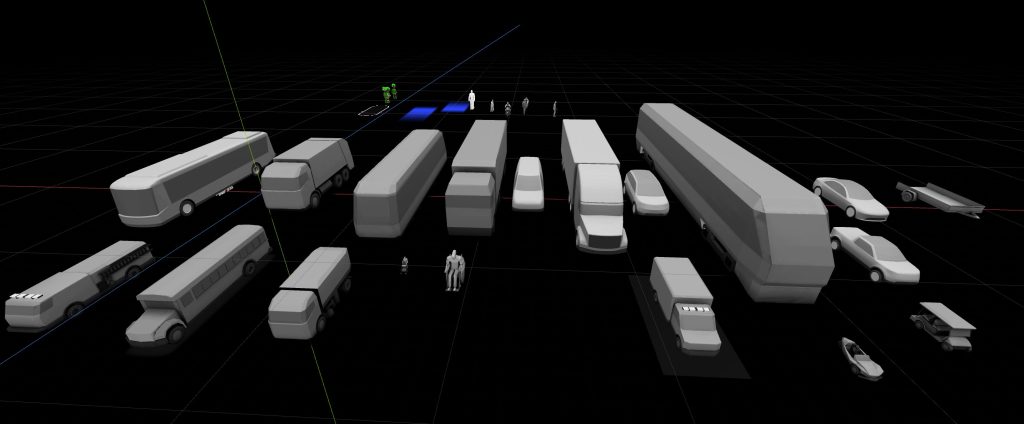
Credit: Green
The visualization is a crucial part of manual operation and can be considered a distinct advantage that Tesla has over other companies.
It continues to be an effort that Tesla invests heavily in, as it keeps refining the suite and making it more robust with additional visualizations and animations.
Recently, it was revealed that Tesla is planning to utilize Unreal Engine for driver visualization to create a realistic depiction of the vehicle’s environment. Tesla has not yet confirmed this, but coding found with the Model S and Model X showed it could be coming in the near future.
News
Tesla dominates best-selling EVs in Q3, but there’s one disappointment

Tesla dominated the sales figures for electric vehicles in the third quarter in the United States, but there was one disappointment: the Cybertruck.
As a whole, the EV industry benefitted from the loss of the $7,500 EV tax credit in Q3, which was something many expected. As the credit expired, consumers rushed to showrooms to take the credit and remove $7,500 from the purchase price of their new vehicle.
Will Tesla thrive without the EV tax credit? Five reasons why they might
It was a very interesting time for many companies as they scrambled to figure out how to push as many vehicles out the door as they could in preparation for the tax credit’s removal. In typical fashion, Tesla was able to top every manufacturer and secure a dominating portion of the overall market in Q3.
However, some other OEMs pulled out some surprises, including Chevrolet, Honda, and Ford, which managed to get two vehicles in the top 10, as many as Tesla.
Cox Automotive compiled the data in its Q3 Electric Vehicle Sales Report:
- Tesla Model Y – 114,897
- Tesla Model 3 – 53,857
- Chevrolet Equinox EV – 25,085
- Hyundai Ioniq 5 – 21,999
- Honda Prologue – 20,236
- Ford Mustang Mach-E – 20,177
- Volkswagen ID.4 – 12,470
- Audi Q6 e-tron – 10,299
- Ford F-150 Lightning – 10,005
- Rivian R1S – 8,184
10.5 percent of the automotive sales in the U.S. in Q3 were electric, a new record that surpasses that of Q3 2024, where the total share of sales for EVs was 8.6 percent.
Now, the disappointment that is evident from this list is the fact that there is no Tesla Cybertruck listed. That’s because it was the second-best-selling EV pickup on the market. The company sold 5,385 Cybertruck units in Q3.
The Cybertruck has been a vehicle that has confused many Tesla fans and owners, especially considering the company had such stratospheric expectations for the vehicle while it was in development. Reservation trackers had the truck sitting between one million and two million orders, but it has not lived up to that.
Pricing is the main issue with Cybertruck. Tesla introduced the pickup with Single, Dual, and Tri-motor configurations, priced at $39,990, $49,990, and $69,990. Those price points are simply a thing of the past.
🚨 Tesla Cybertruck was the second-best-selling EV pickup in Q3, Cox Automotive data shows.
It was only outsold by the Ford F-150 Lightning, which sold 10,005 units for the quarter.
Cybertruck had 5,385 sales. pic.twitter.com/Q2gnUbF6bk
— TESLARATI (@Teslarati) October 13, 2025
-
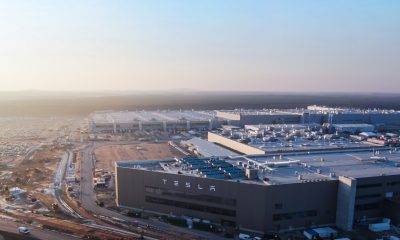
 News2 weeks ago
News2 weeks agoTesla Giga Berlin’s water consumption has achieved the unthinkable
-
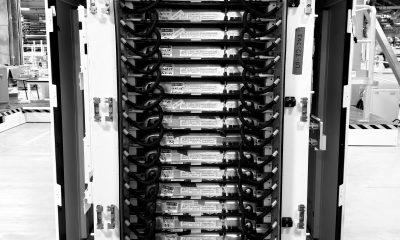
 News2 weeks ago
News2 weeks agoTesla unveils charging innovation that will make the Semi instantly successful
-

 News2 weeks ago
News2 weeks agoWaymo responds to shocking video that would have gotten Tesla FSD crucified
-
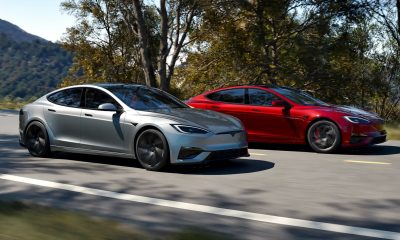
 News2 weeks ago
News2 weeks agoLucid CEO shades Tesla Model S: “Nothing has changed in 12 years now”
-
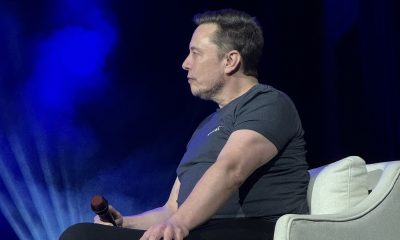
 News2 weeks ago
News2 weeks agoElon Musk slams Sky News over Epstein invite: “Deserves complete contempt”
-
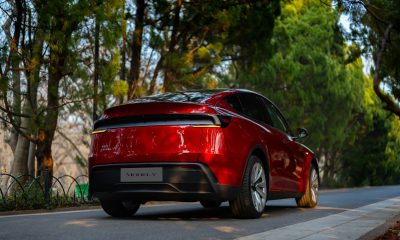
 News2 weeks ago
News2 weeks agoTesla Model Y sells faster than diesel cars and other EVs in Sweden’s used market
-
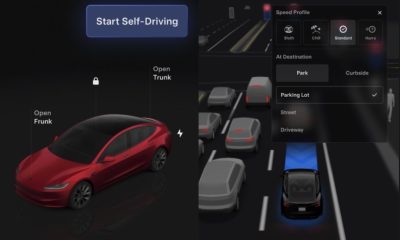
 News7 days ago
News7 days agoTesla FSD (Supervised) V14.1 with Robotaxi-style dropoffs is here
-
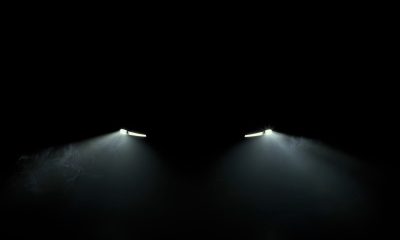
 News1 week ago
News1 week agoTesla all but confirms that affordable Model Y is coming Tuesday


